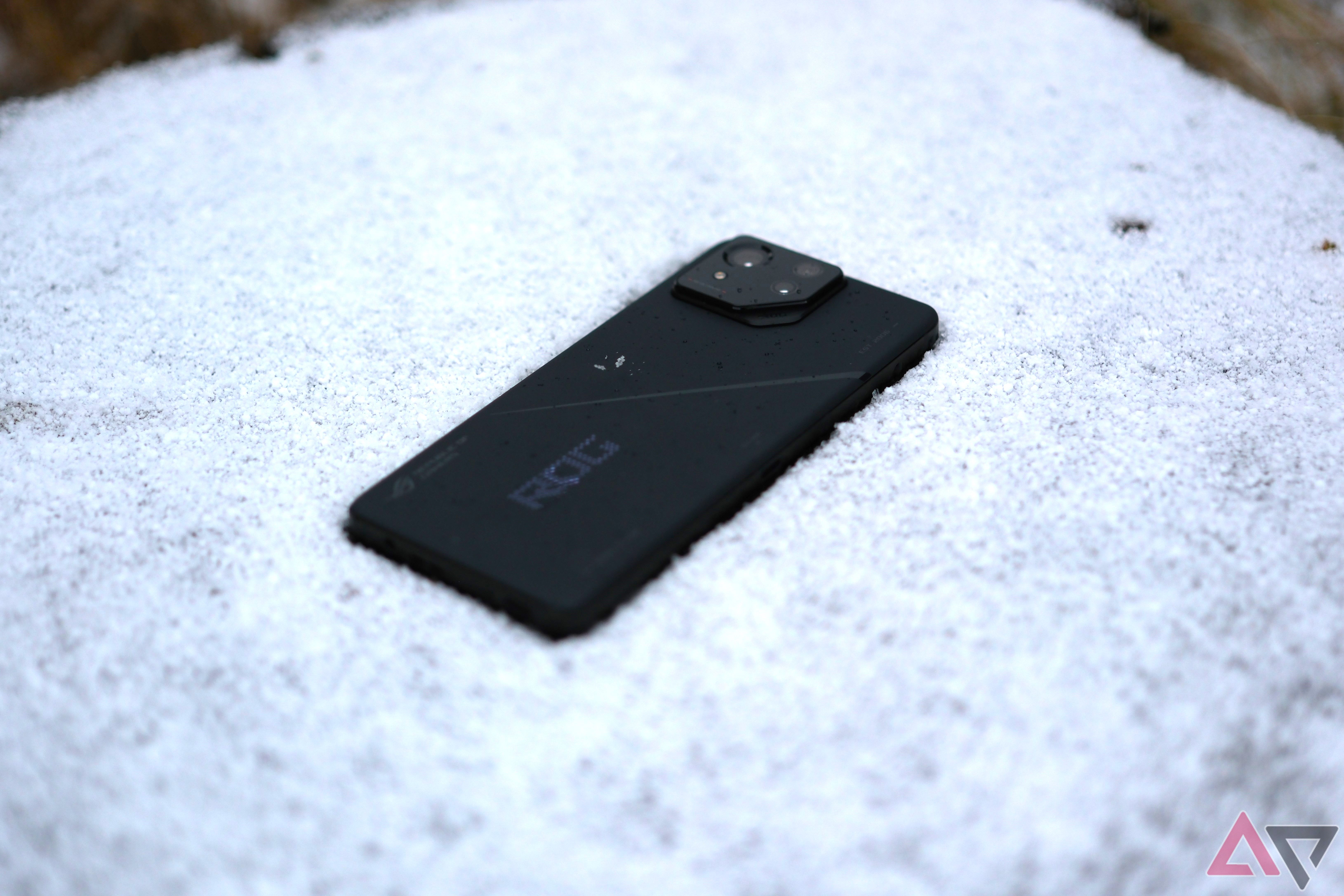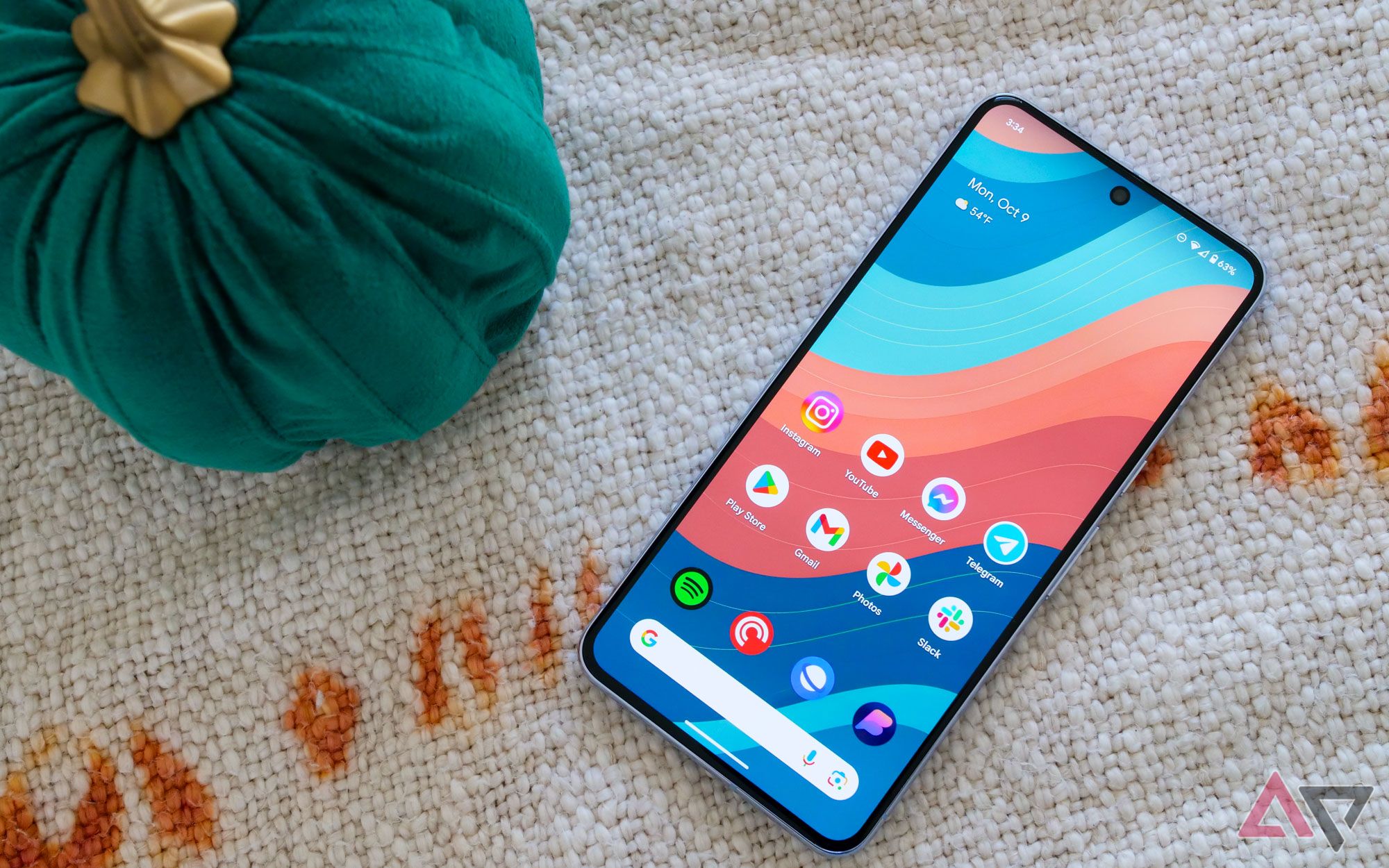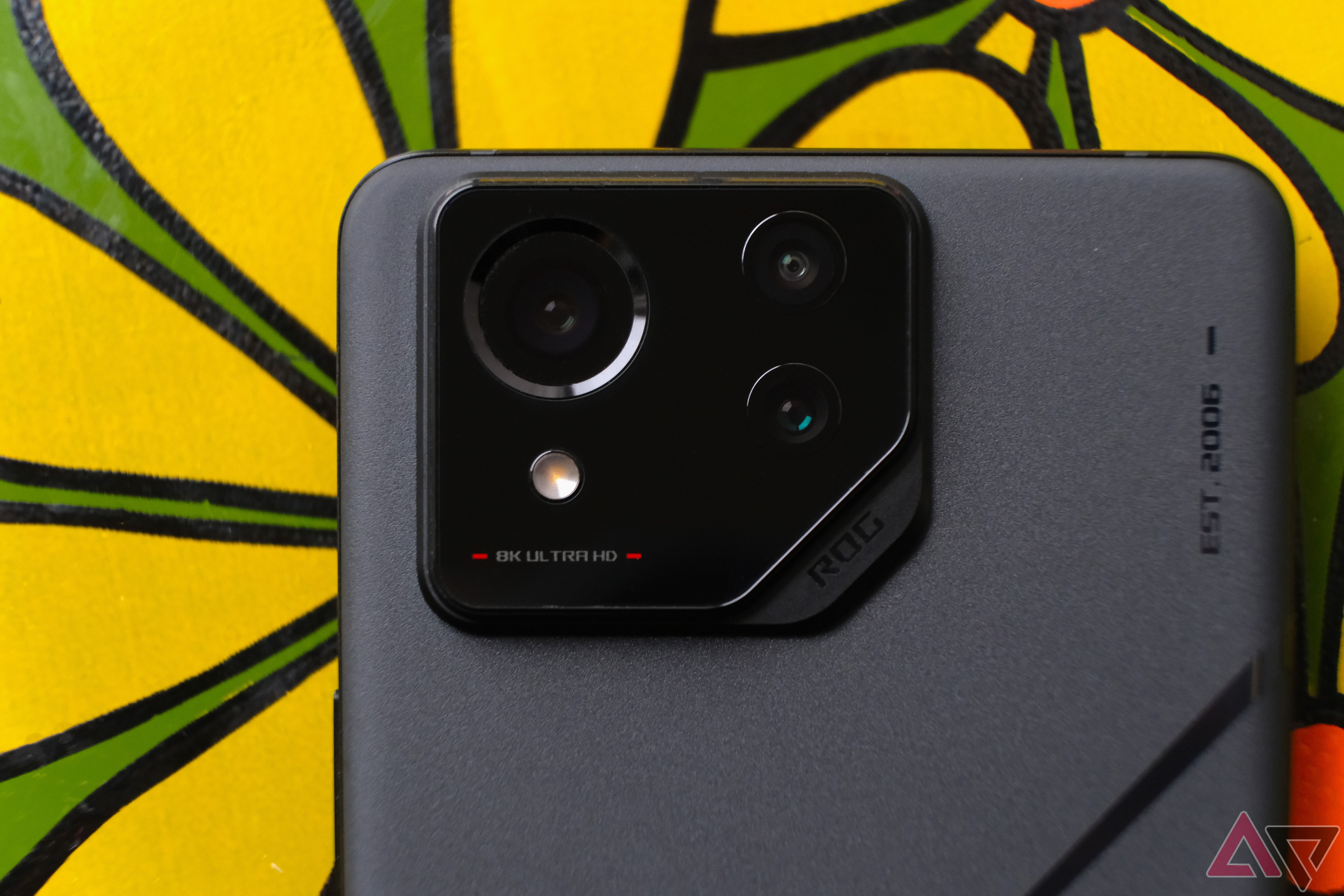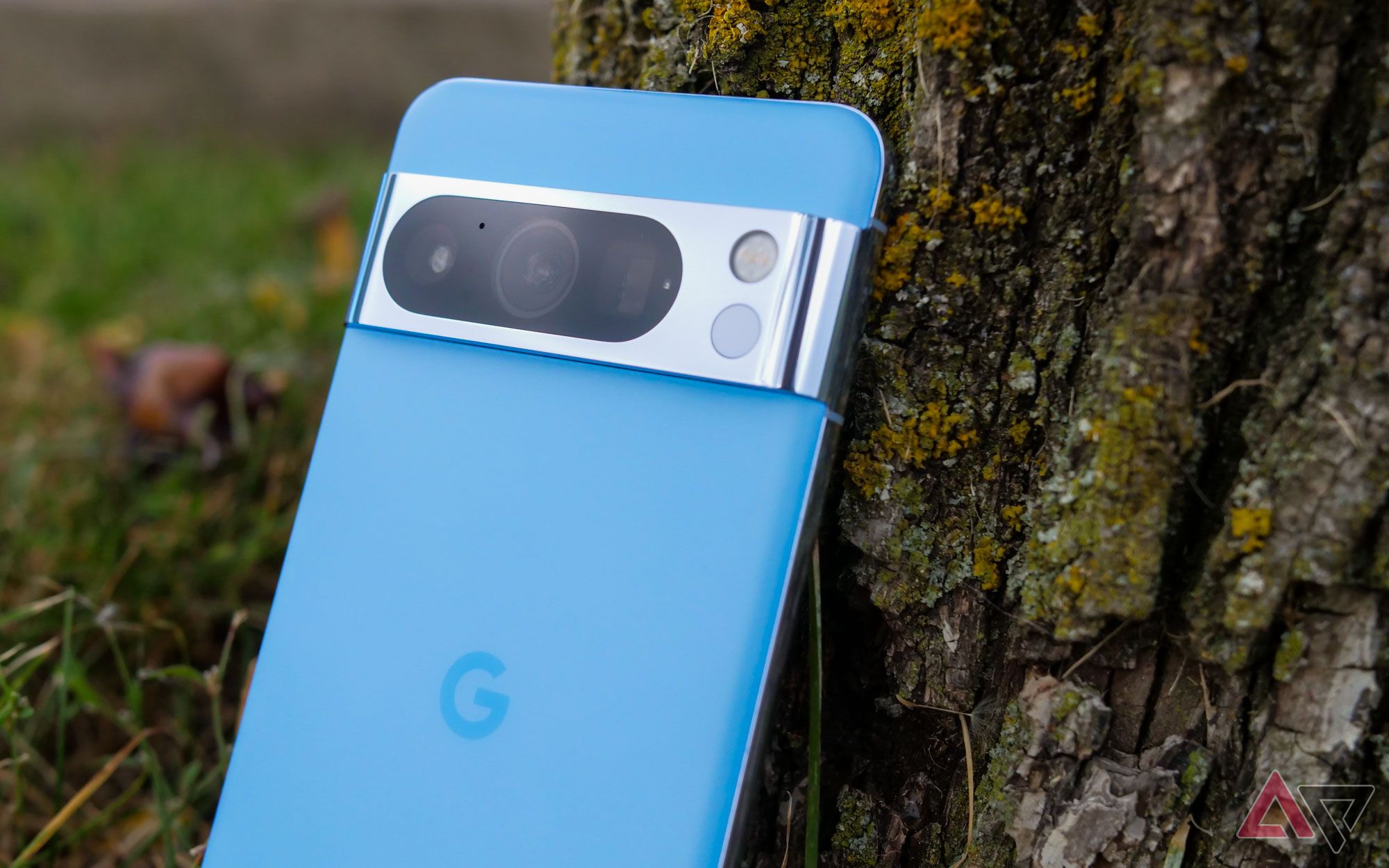-
Asus ROG Phone 8 Pro
Gaming champion$1200 $1315 Save $115The Asus ROG Phone 8 Pro may be a gaming-focused device, but it does so much right, it could take on the best flagships today. It has amazing performance, a stunning display, and days of battery life. It’s not perfect, though, and that’s what holds it back.
Pros- Performance is fantastic
- Stunning display
- Days of battery life
Cons- Design isn’t for everyone
- Cameras are good, not great
-
Google Pixel 8 Pro
A crowd pleaser$799 $999 Save $200The Google Pixel 8 Pro was designed to please the masses. Featuring a custom Tensor G3 processor, a beautiful display, and never-ending software support. That’s not to mention its camera system, which is at the top of its class. Google design is dated, though, but it still works.
Pros- Good day-to-day performance
- Seven years of software updates
- Display is beautiful
Cons- Runs warm when pushed
- Design is starting to feel dated
When shopping for an Android device, it’s important to keep your needs in mind. Smartphones excel in varying areas, making your choice a bit more difficult. They differ in features and specs and their intended target audience.
There are phones like the Google Pixel 8 Pro, which were designed to appeal to the masses. The Pixel 8 Pro is a great device that ticks a lot of boxes and gets nearly a decade of software support. Then there are phones like the Asus ROG Phone 8 Pro. This beast of a smartphone is primarily focused on being a great gaming phone, but would be more than happy to be your daily driver.
No phone can satisfy every customer, but variety is the key to customer satisfaction. So, which device is better suited to handle your daily needs, the crowd-pleasing Pixel 8 Pro or the more niche but highly capable ROG Phone 8 Pro?
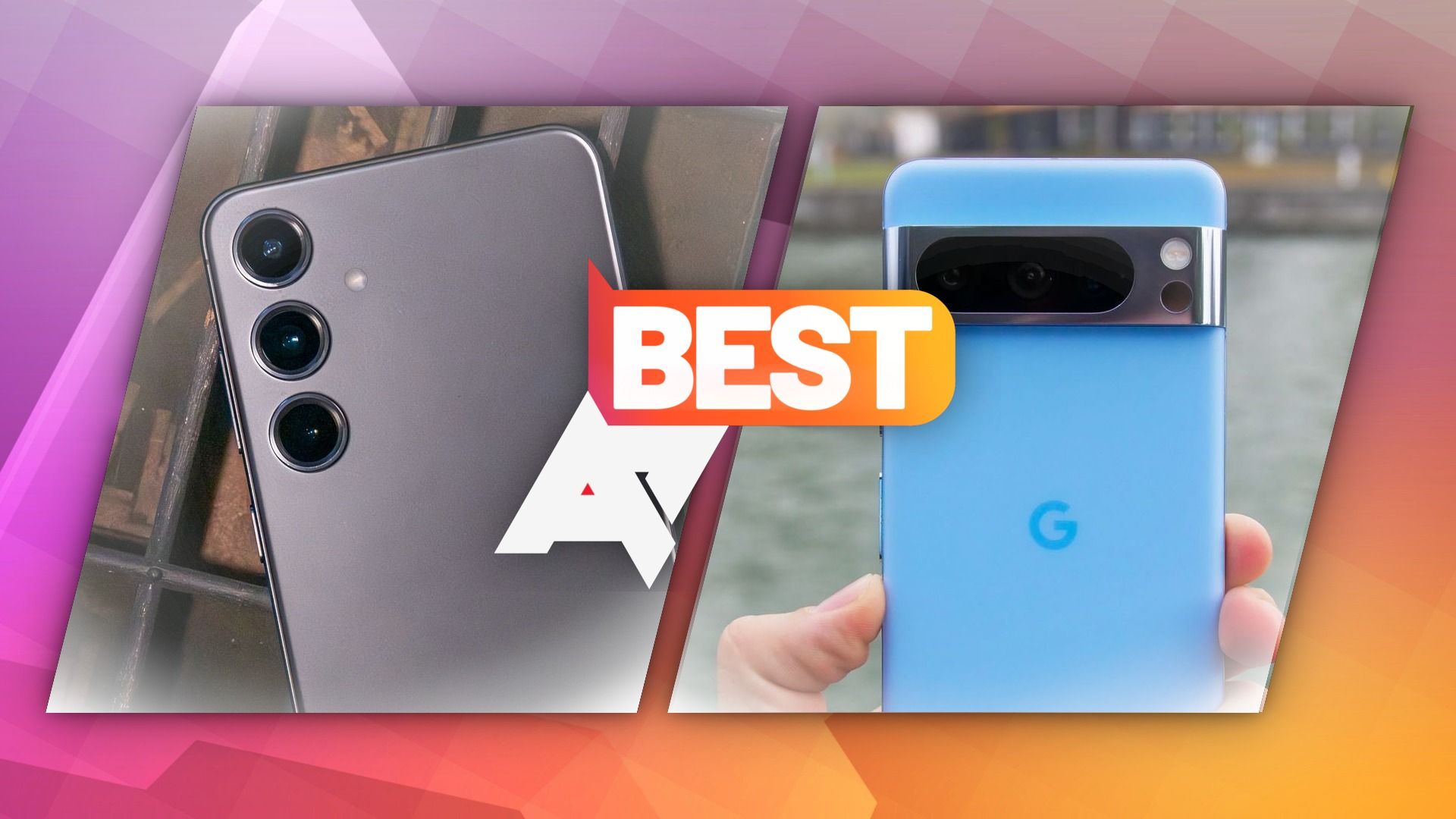
Best Android phones in 2024
In the market for a new phone? Get the best Android experience with these flagship phones
Price, availability, and specs
The Asus ROG Phone 8 Pro was released in January 2024 and comes in two separate configurations. One version ships with 16GB of RAM and 512GB of storage and carries a $1,200 price tag. The second version bumps the RAM and storage to 24GB and 1TB respectively, while ballooning the price to $1,500. It ships in only one color, Phantom Black. It can be found directly from Asus or authorized retailers like Amazon.
The Google Pixel 8 Pro is a few months older, having been released in October 2023. The Pixel 8 Pro ships in four storage configurations. 128GB of storage sells for $999, 256GB costs $1,059, 512GB retails for $1,179, and the 1TB jumps up to $1,399. It comes in Mint, Bay, Obsidian, and Porcelain colorways. Like many Pixel devices, it can be purchased directly from Google, retailers like Amazon, or your favorite carrier.
-
Asus ROG Phone 8 Pro Google Pixel 8 Pro SoC Qualcomm Snapdragon 8 Gen 3 Google Tensor G3 Display dimensions 6.78″ 6.7″ Display resolution 1080 x 2400 1344 × 2992 RAM 16GB or 24GB 12GB Storage 512GB or 1TB 128GB, 256GB, 512GB, 1TB UFS 3.1 Battery 5500mAh 5,050mAh Charge speed 65W wired, 15W wireless 30W wired, 18W wireless (with Pixel Stand 2), 12W wireless (Qi), 5W reverse wireless Charge options USB-C, Qi wireless 1.3 Wired, Wireless, Reverse wireless Ports USB-C, 3.5mm headphone jack USB-C 3.2 OTG SIM support Dual Dual SIM (Nano SIM and eSIM) Operating System Android 14 Android 14 Front camera 32MP RGBW 10.5MP selfie camera Rear camera 50MP, f/1.9 main; 13MP, f/2.2 ultrawide; 32MP, f/2.4 telephoto 50MP main; 48MP ultrawide; 48MP telephoto Wi-Fi connectivity Wi-Fi 7 Wi-Fi 7 (Except certain markets), Wi-Fi Direct Connectivity NFC UWB, NFC Bluetooth Bluetooth 5.3 Bluetooth 5.3 with aptX HD Dimensions 163.8 x 76.8 x 8.9mm 162.6 × 76.5 × 8.8mm Weight 225g 213g IP Rating IP68 IP68 Colors Phantom Black Obsidian, Porcelain, Bay Stylus No No Price $1,200 From $999
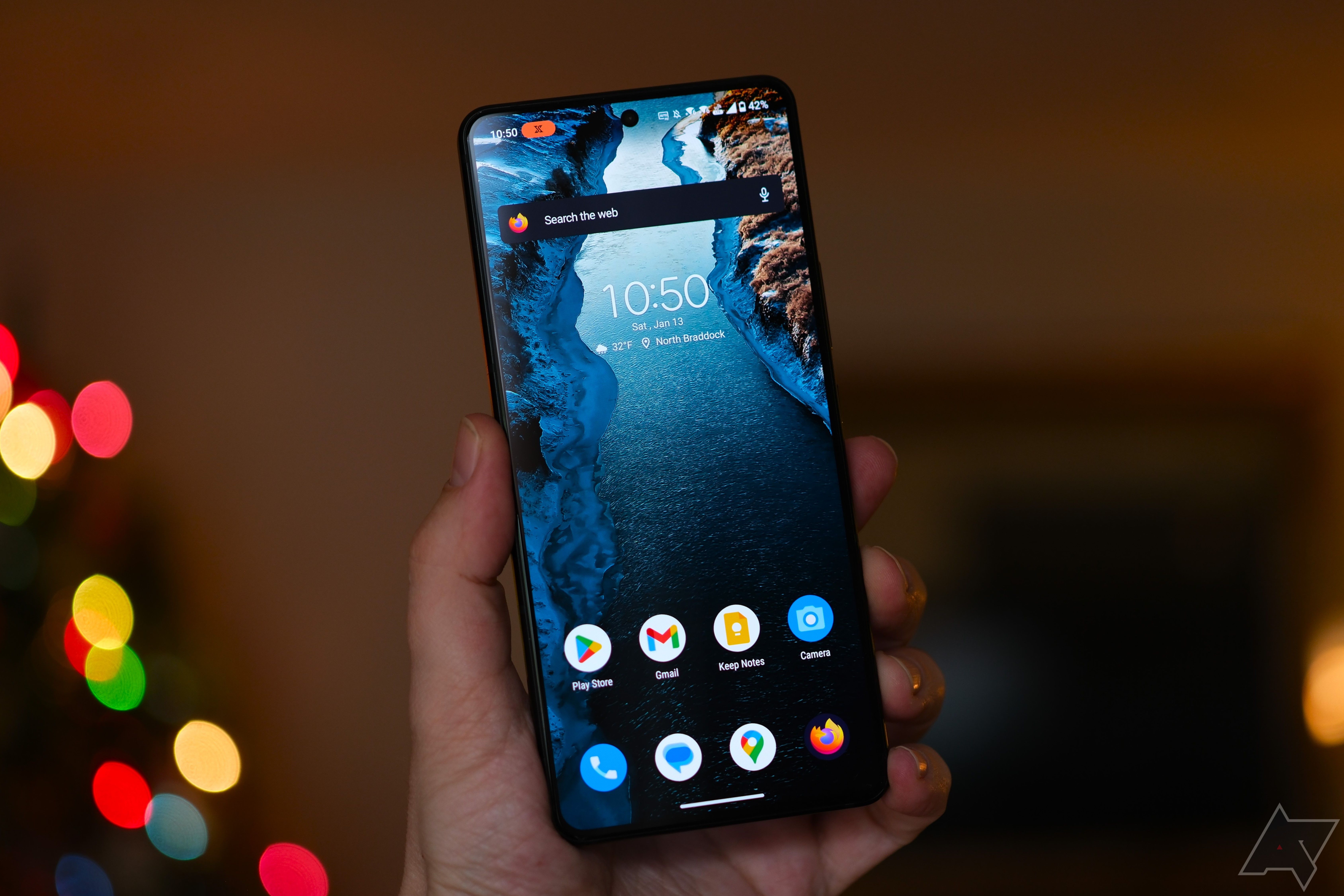
Asus ROG Phone 8 Pro review: I’m not sure this is a gaming phone
Asus has changed the ROG Phone formula, and I’m not convinced it’s for the better
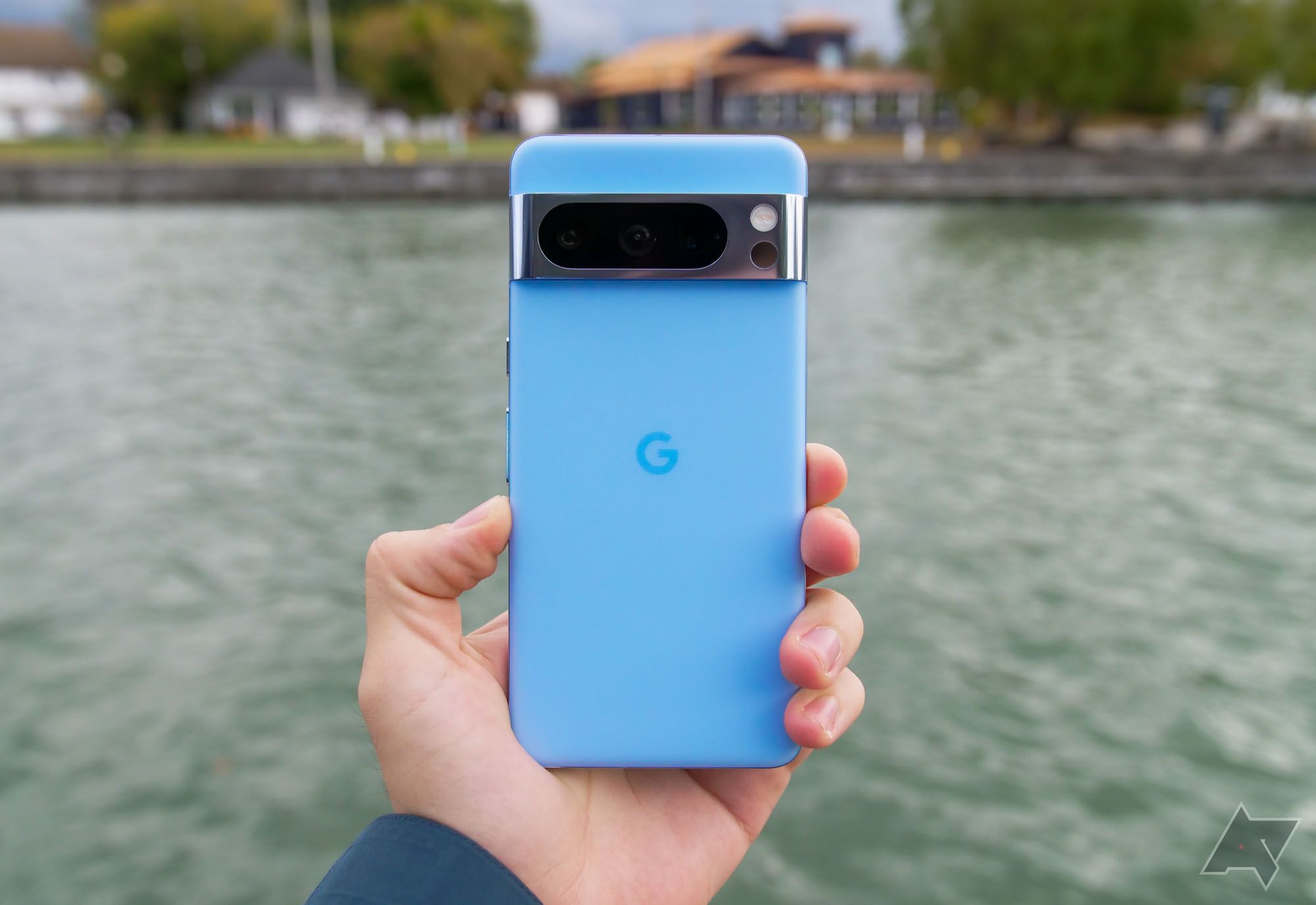
Google Pixel 8 Pro review: Living up to its name
If you want to see the future of Google, the Pixel 8 Pro is the phone to buy
Design
Compared to some of its previous gaming phones, Asus toned down its design for the ROG Phone 8 Pro. Gone are the gimmicky and flashy exteriors, replaced by a more subtle nod to its gaming background. Google has continued its Pixel design language with the Pixel 8 Pro. It did round the corners a bit more, but it’s unmistakably a Pixel device.
The ROG Phone 8 Pro is surprisingly similar in size to the Pixel 8 Pro. It measures 163.8 x 76.8 x 8.9mm and weighs 225g. The Pixel 8 Pro is sized almost identically at 162.6 x 76.5 x 8.8mm but weighs a bit less at 213g. Both devices also sport an aluminum frame and a glass back. The back of the ROG Phone 8 Pro is protected by Gorilla Glass, while the Pixel 8 Pro gets Gorilla Glass Victus 2.
The exterior also has something unique that is specific to each device. The ROG Phone has a 341 mini-LED programmable matrix on the back. You can adjust them to display various things like the weather or remaining battery life, or you can just disable it entirely. The Pixel 8 Pro is relatively bland except for its brushed aluminum camera bar. In case you haven’t seen a Pixel device over the past couple of years, all Pixel devices have an edge-to-edge horizontal camera bar located about a third of the way down the back of the phone. The design is getting a little tired at this point, but it is unique to the Pixel series.
The front is the same for both devices. Like most Android phones nowadays, their display covers most of the front, along with slim bezels and a hole-punch camera. The ROG Phone has two USB-C ports, one can be found at the bottom and another can be found on the left side. The Pixel 8 Pro has a single USB-C port at the bottom of the device.
Display
Speaking of the front being the same, their displays are also very similar to each other. The Asus ROG Phone 8 Pro has an AMOLED, 6.78-inch, 2400 x 1080 panel. It has a 165Hz LTPO display, making for smooth animations and the ability to lower that high refresh rate when it isn’t needed to conserve battery life. With a peak brightness of 2500 nits, it also gets eye-searingly bright.
The Pixel 8 Pro ships with an OLED, 6.7-inch, 2992 x 1344 display. It has an LTPO-enabled 120Hz refresh rate for smooth scrolling and animations. The Pixel 8 Pro even has a similar 2400 nits of peak brightness, ensuring you have no issues seeing in the brightest environments.
With similar specs, the ROG Phone and the Pixel are going to have similar performance. Luckily, that means they will both have beautiful and capable displays. They are also protected by Gorilla Glass Victus 2.
Software
Up to this point, these two devices have been incredibly similar. That starts to change in terms of software. The ASUS ROG Phone 8 Pro runs Android 14 and ROG UI out of the box. Asus has done a remarkable job, allowing for all sorts of customization. You can choose between various themes, or you can run stock Android. Maybe you prefer stock Android but would love to control certain aspects of the UI. Asus allows you to selectively tweak the UI, letting you dial it to your personal preference.
Asus also includes a gaming app, called Armory Crate. This useful app lets you customize your game’s settings and can even act as a game launcher. Much like a PC, Armory Crate lets you dial in performance settings per game and control which games are full screen and which to letterbox so the front-facing camera doesn’t get in the way. Where Asus drops the ball a bit is that they only promise two Android OS upgrades and four years of security updates.
Google, on the other hand, focuses more on AI and adding creature comforts. The Pixel 8 Pro launched with Android 14 and Pixel UI. Pixel UI is a mostly stock ROM with some interesting tweaks. You get a Call Screen, which lets you utilize Google Assistant to screen your calls for suspected spam. It also gives you various photo editing capabilities, such as Magic Editor and Magic Eraser. These features aren’t as fancy as Armory Crate, but they are arguably more important to all but the most dedicated mobile gamers.
Google also thumps Asus when it comes to software support. The Pixel 8 Pro will receive a minimum of seven years of Android and security updates. Even if you don’t plan on keeping the phone that long, it should keep the device relevant for a longer period when selling it.
Performance
As a gaming-focused device, Asus outfitted the ROG Phone 8 Pro to be a performance beast. Equipped with a Snapdragon 8 Gen 3 processor and either 16GB of RAM and 512GB of UFS 4.0 storage or 24GB of RAM and 1TB of UFS 4.0 storage, this device will happily burn through any tasks you can conjure up.
The Pixel 8 Pro pairs Google’s custom Tensor G3 processor with 12GB of RAM. The Pixel 8 Pro ships in 128GB, 256GB, 512GB, or 1TB storage options. Some users may be a little let down that Google went with UFS 3.1 for all of its storage options.
In terms of raw power, the ROG Phone 8 Pro and its Snapdragon 8 Gen 3 processor will run circles around the Pixel 8 Pro and its Tensor G3 processor. In the Geekbench 6 benchmark, the ROG Phone received a single-core score of 2317 and a multicore score of 7272. Google is a bit behind with a single-core score of 1756 and a multicore score of 4468. This is also true of the Geekbench 6 OpenCL GPU benchmark. The ROG Phone scored 14340, while the Pixel 8 Pro scored 5135 on the OpenCL test.
The thing is, benchmarks and a spec sheet only go so far. Yes, the Asus ROG Phone 8 Pro easily wins the performance crown here, but in everyday performance, the Pixel 8 Pro flies with its Tensor G3 and its great software optimization.
The Pixel should easily navigate your day-to-day needs and let you play the latest games. This is more of an issue with Android as a whole because as soon as more demanding titles hit the Play Store, the ROG Phone 8 Pro has the additional power to play these theoretical games at maximum graphical fidelity while Google’s offering may not. Keep in mind, that the Tensor G3 creates a lot of heat, so expect it to get warm when you start to push its performance.
Battery life
With a 5500mAh battery and the efficiency of the Snapdragon 8 Gen 3 processor, Asus built the ROG Phone 8 Pro to last for days, not for hours. When the battery does get low, the 65W charger is capable of charging this device in about an hour. You can use either USB-C port for charging, so you never have to worry about cables getting in the way of your gaming session. It can be charged via QI 1.3 wireless charging at 15W, which will be much slower than charging over the wire. In the end, you can expect at least two full days of usage on a single charge. It also offers 10W reverse wired charging.
The Pixel 8 Pro has a smaller 5,050mAh battery and loses the excellent efficiency of the Snapdragon processor. As a result, the Pixel 8 Pro should easily get you through a full day of heavy use, but not much more than that. It can be charged via USB-C at a maximum of 30W, wirelessly at 23W, or reverse wireless charging. Using a 30W wired charger, you can fully charge the Pixel 8 Pro in about 80 minutes.
Camera
Asus has improved its camera this year for the ROG Phone 8 Pro. It has a 50MP f/1.9 main camera, a 32MP f/2.4 telephoto lens with 3x optical zoom, and a 13MP f/2.2 ultrawide lens. It also has a 32MP f/2.5 front-facing camera.
The Google Pixel lineup is well known for its camera prowess, and it’s on full display with the Pixel 8 Pro. It has a triple camera setup consisting of a 50MP f/1.7 main camera, a 48MP f/2.8 telephoto camera with 5x optical zoom, and a 48MP f/2.0 ultrawide camera. The Pixel also has a 10.5MP f/2.2 front-facing camera.
Camera hardware and specs are great and all, but in today’s world, a smartphone needs to excel at computational photography. Computational photography happens after you snap a picture. The phone’s software and algorithms do the heavy lifting to process the photo.
The result is, that while the ROG Phone 8 Pro takes solid pictures from all three lenses, it just can’t match the Pixel 8 Pro. The Pixel 8 Pro will routinely capture more details and produce a much brighter image. The Pixel 8 Pro will also just be a more consistent shooter for capturing life’s finest moments. Asus did a remarkable job here, it’s just that Google’s computational skills are tough to beat.
Which is right for you?
Choosing a winner comes down to what you value most in a device. Do you want one of the best gaming phones, or would you prefer one of the best camera phones? It’s not an easy decision as both devices excel in some categories, and neither has any real glaring shortcomings.
Looking at this objectively, and from the viewpoint of the common Android shopper, the Google Pixel 8 Pro is the winner here. It has a stellar display, the performance is fast enough, it will get software support for years and years, and the battery life will make it through an entire day. Add in the exceptional camera system and you have a well-rounded phone. The design might be dated at this point, but it was designed to appeal to the masses.
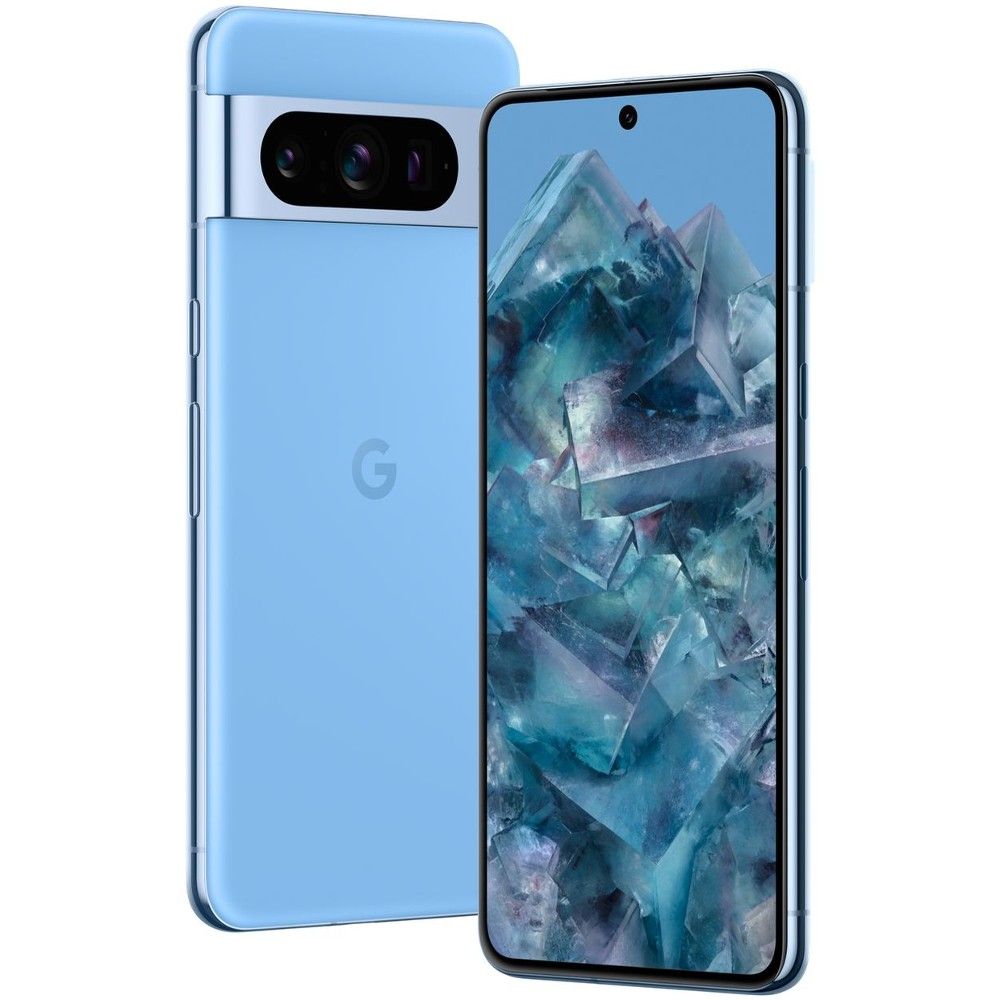
Google Pixel 8 Pro
Great camera and extended support
The Google Pixel 8 Pro is a great overall device that doesn’t have any glaring issues. It has a fantastic display, good performance, and almost a decade of software support. That’s not even including its reliable and great camera system. It may not have the longest battery life, but a full day is still pretty good.
If I were choosing a device today, I would hands-down go with the Asus ROG Phone 8 Pro. I’m a performance junkie and love that it gets days of battery life. The ROG Phone 8 Pro’s design is also appealing, but I acknowledge that it’s not everyone’s cup of tea. I also dig the gaming-focused software and the customization level that it allows. If Asus had given the ROG Phone 8 Pro longer software support, slightly better cameras, and a more crowd-pleasing design, it would have without question won this competition.
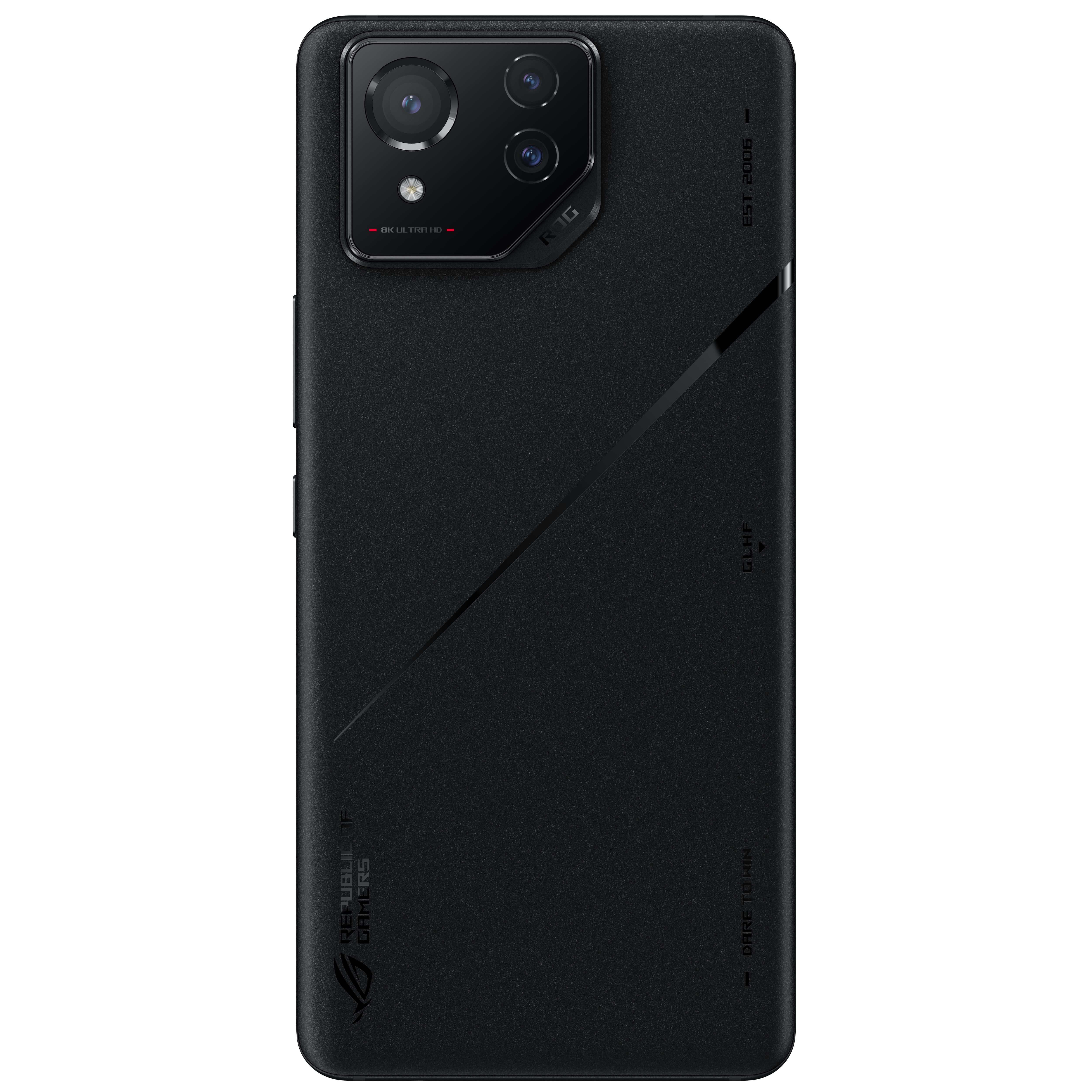
Asus ROG Phone 8 Pro
It’ll please any gamer
Asus has a real winner on its hands with the ROG Phone 8 Pro. Its performance is phenomenal, as is its display and battery life. The design isn’t for everyone and its camera system is not on the same level as the Pixel’s. Its overall software support is also sorely lacking.




